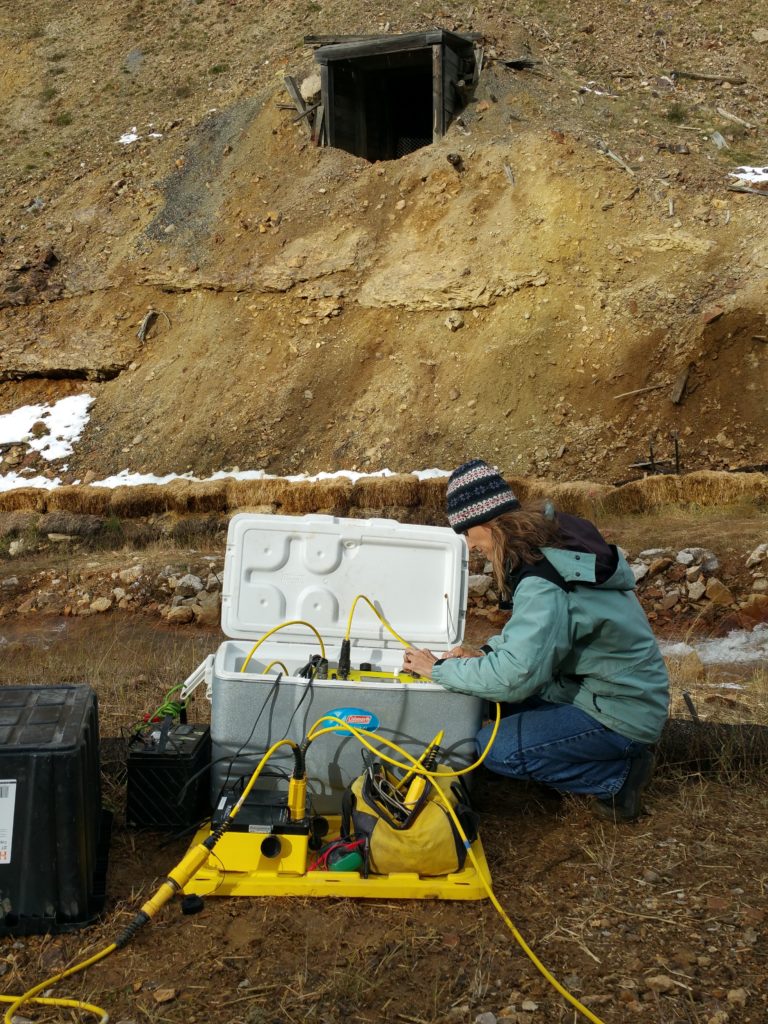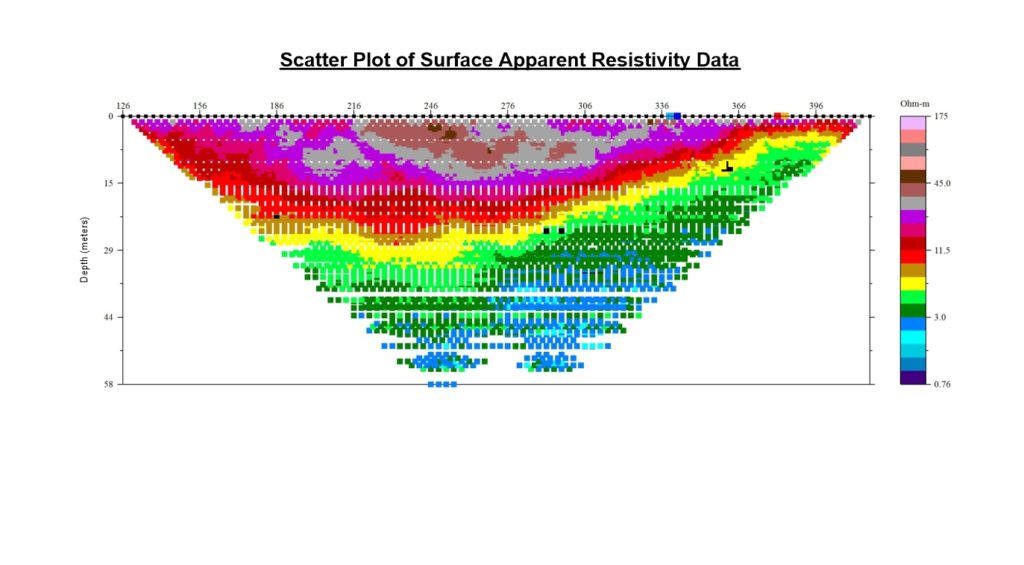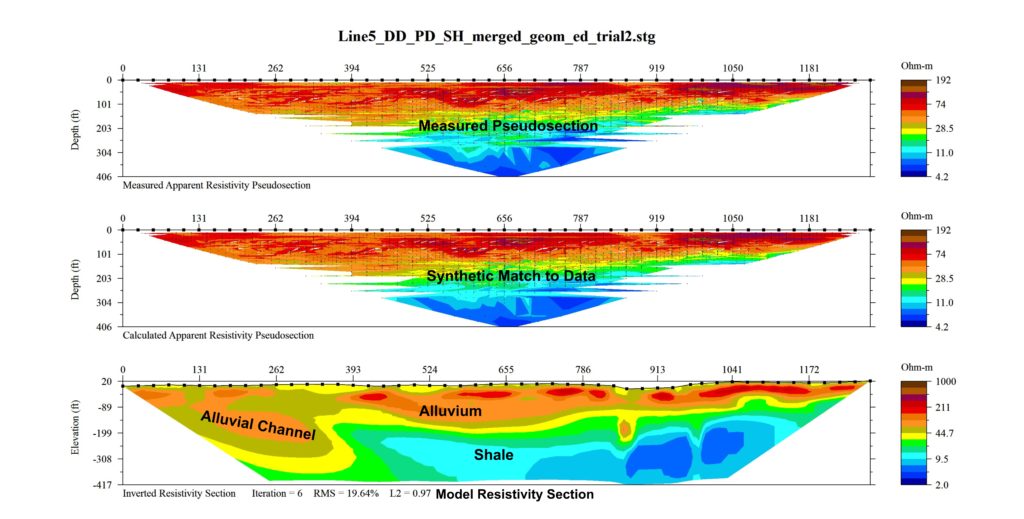Spectrum specializes in the utilization of electrical resistivity tomography (ERT) and electrical resistivity imaging (ERI), along with induced polarization (IP), for groundwater applications. These applications include the delineation of preferential pathways for groundwater, delineation of aquifers and aquicludes for well siting, and delineation of saline/high TDS/contaminant plumes in groundwater.
The electrical resistivity of a material is a measure of the ability of that material to transmit an electrical current. In the electrical resistivity method a DC circuit is established in the ground via cables and electrodes, and the ground acts as the resistor to complete the circuit. There are several different arrays that can be used to collect the data; however, the most common are Wenner, Schlumberger and dipole-dipole. Electrical resistivity data are typically displayed in 2D sections or profiles where they supply lateral and vertical electrical resistivity information about materials either directly below a given transect (much like a road cut); or between two boreholes.
The electrical resistivity method had its beginnings in the mining industry, but is now commonly used in the environmental and engineering businesses. Because the electrical resistivity of a material correlates well with grain size (and generally increases with increasing grain size) this method can be used not only to identify lateral and vertical boundaries between different materials but also to identify the lithology of the material. The electrical resistivity method is also sensitive to the chemistry of a material, and therefore can be used for many groundwater applications such as the delineation of saltwater and contaminant plumes (DNAPL and LNAPL), delineation of zones of weathered or fractured rock in competent rock, and delineation of degree of saturation of permeable materials. Because boundaries between electrical layers often correlate well with geologic contacts, the electrical resistivity method has many applications




